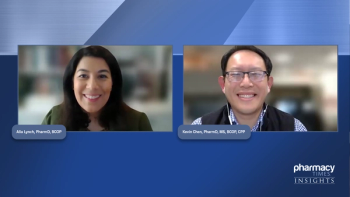
Immunization Schedule for Adults Who Received An Earlier Pneumococcal Conjugate Vaccine
Secondary pneumococcal vaccine schedules are explored by Drs Schaffner, Bridgeman, and Madison.
Episodes in this series

Ryan Haumschild, PharmD, MS, MBA: I want to talk about additional immunization schedules. Mr Schaffner, I want you to help answer this question. What’s the immunization schedule for adults who have received earlier pneumococcal vaccinations, such as PCV13 [pneumococcal conjugate vaccine 13] or PCV7?
William Schaffner, MD: As Ms Bridgeman said, everybody aged 65 and older everyone should receive a pneumococcal vaccine. The ACIP [Advisory Committee on Immunization Practices] doesn’t make a distinction between the use of PCV20 or PCV15 followed by polysaccharide vaccine. They give you 2 pads to use, your choice. Please use 1. Those who previously received some pneumococcal vaccine could have received PCV7, PCV13, polysaccharide vaccine, or some combination of all those. That’s quite a display of different options. Rather than call your attention to the footnotes, although I do like that, I’m going to call your attention to the CDC [Centers for Disease Control and Prevention] chart and app that was mentioned. In the app, because there are opportunities for you to update those patients before they reach age 65. There will be designated intervals depending on the patient’s underlying condition and which vaccines they received previously. It gets to be fairly elaborate, but the chart helps, as does the app.
Mary Bridgeman, PharmD, BCPS, BCGP, FASCP: I’m going to piggyback [on that]. I agree that these recommendations become complex given an individual’s history and challenging as the pneumococcal vaccine recommendations have evolved over the past years. The PneumoRecs VaxAdvisor app is fantastic. I don’t want to call it a choose-your-own-adventure app for pneumococcal vaccination, but it allows you to customize based on all the factors we described to ensure that you’re providing the appropriate immunization for your patient at that time and at that moment.
Christina Madison, PharmD, FCCP, AAHIVP: We don’t want patients to feel like we’re overvaccinating, but we also don’t want a situation where someone has a missed opportunity to vaccinate because we’re gun shy because we’re not sure which vaccine to give. Or if you don’t have the specific type that’s indicated, they’ll turn the patient away and say, “We don’t have this 1 available at this time.” We want to make sure we’re not giving the patient an undue burden because they may have an indication for a vaccination. We want to make sure we have the full complement of all the different formulations in the pharmacy as well as not making sure we make arrangements so they can go somewhere else to get that vaccination that’s indicated.
Mary Bridgeman, PharmD, BCPS, BCGP, FASCP: The timing for the repeat or follow-up is critically important because we know that those missed opportunities or the inability to follow up at that 8-week or 1-year time frame is critically important. We don’t want to miss that.
Christina Madison, PharmD, FCCP, AAHIVP: Yes, and that’s why if you have that rheumatology or oncology office where you see severely immunosuppressed patients, that 8-week time frame is crucial to protect them against invasive pneumococcal disease. Mr Schaffner has he wants to add to this.
William Schaffner, MD: All of us have been saying good things entirely complementary. It’s all based on taking an immunization history when you see the patient. Once you’ve got that, then you can proceed appropriately. Don’t hesitate to take that immunization history.
Ryan Haumschild, PharmD, MS, MBA: That can be underscored. And if these patients are seeing multiple specialists and primary care providers, it’s difficult outside the app to keep it all together. How do we load this information into our EMRs [electronic medical records]? [We need to] load this information, leveraging state databases so we can have a full history of a patient, and make an informed decision that might be specific to them. Many of you hit on it: that’s the way we set our providers and patients up for success. We don’t have too many repeats, and we can keep them on their immunization schedule, so they can receive the benefits we want to provide them.
Christina Madison, PharmD, FCCP, AAHIVP: Remember, a lot of our state vaccination registries have a patient portal so the patient can keep records for themselves. I often empower my patients to make sure they know what vaccinations they have and if they might require a vaccine in the future. We often use our state registry, which does what we call vaccine forecasting. It tells them if they’re up to date or if they’re due for a vaccine. A lot of times, that’s what prompts them to come into the pharmacy or as part of your vaccine assessment during that primary care visit.
Ryan Haumschild, PharmD, MS, MBA: It’s a great way to empower the patient.
Transcript edited for clarity.
Newsletter
Stay informed on drug updates, treatment guidelines, and pharmacy practice trends—subscribe to Pharmacy Times for weekly clinical insights.














































































































































































































